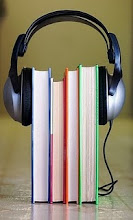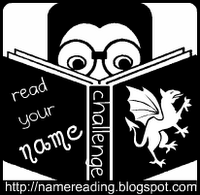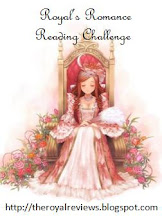1. Austenland opens, "It is a truth universally acknowledged that a thirtysomething woman in possession of a satisfying career and fabulous hairdo must be in want of very little, and Jane Hayes, pretty enough and clever enough, was certainly thought to have little to distress her" (1). How does this sentence set the stage for the novel? Compare it to the famous first sentence of Pride and Prejudice: "It is a truth universally acknowledged, that a single man in possession of a good fortune, must be in want of a wife." Which of these universal "truths" is actually true, if either?
2. Austenland, besides chronicling Jane's stay at Pembrook Park, lists all thirteen "boyfriends" she's had in her lifetime. How well does the reader get to know Jane's past? How much has she changed from her first relationship at age twelve to the one that is now just beginning?
3. Jane observes of the BBC's Pride and Prejudice: "Stripped of Austen's funny, insightful, biting narrator, the movie became a pure romance" (2). What would Austenland be like without Jane's own insightful, biting narration?
4. Looking at the gallery of portraits in Pembrook Park, Jane feels "an itch inside her hand" to paint a portrait, "but she scratched the desire away. She hadn't picked up a paintbrush since college" (36). How is Jane's artistic itch intensified during her stay at Pembrook Park? How does she come to the realization that "she wanted to love someone the way she felt when painting - fearless, messy, vivid" (125)? In the end, has she found that type of artistic love?
5. In Pride and Prejudice, Elizabeth's mother, Mrs. Bennet, is known for her determination to marry off her daughters and for her frequent social blunders. How does Miss Charming, Jane's fellow visitor to Pembrook Park, resemble Mrs. Bennet? What are some of Charming's funny faux pas and verbal blunders?
6. Jane realizes, "Wait a minute, why was she always so worried about the Austen gentlemen, anyway? What about the Austen heroine? (105). Is the heroine given short shrift by many Austen fans today? Why or why not?
7. Jane calls herself and Mr. Nobley "Impertinence and Inflexibility" (133). How do these nicknames originate? How do these traits compare to the pride and prejudice of Darcy and Elizabeth in Austen's novel?
8. Jane's great-aunt Carolyn set the whole Pembrook Park adventure into motion. What do you think Carolyn's intentions were in sending Jane to this Austenland? Do you think Jane fulfilled those expectations?
9. Jane comes to wonder what kind of fantasy world Jane Austen might have created for herself: "Did Austen herself feel this way? Was she hopeful? Jane wondered if the unmarried writer had lived inside Austenland with close to Jane's own sensibility - amused, horrified, but in very realy danger of being swept away" (123). Is it possible to guess at Austen's attitude toward romance by reading her work? Why or why not?
10. Looking at Henry Jenkins, Jane realizes that "just then she herself was more Darcy than Erstwhile, sitting there admiring his fine eyes, feeling dangerously close to falling in love against her will" (190). Are there other occasions in which Jane is more Darcy than Erstwhile? Is it possible that today's single, thirtysomething woman is more Darcy than a so-called spinster?
11. Jane walks away from Nobley and Martin at the airport with the parting words, "Tell Mrs. Wattlesbrook I said tallyho" (186). Why does Jane enjoy her last line so much? What does she mean by "tallyho"?
12. What might Jane Austen think of Austenland, if she were alive today? Could she have possibly anticipated how influential her novels would become, even for twenty-first-century audiences? Could she ever imagine a fan like Jane Hayes?
13. Shannon Hale reveals on her Web site (www.squeetus.com/stage/austen_journey.html) that the original title for Austenland was Ostensibly Jane, and that evolved from a short story, to a novella, to a screenplay, to this novel. Can you imagine a shorter version of Austenland? A feature film? What would each be like?
14. Hale lists her "fantasy casting" of a movie version of Austenland at www.squeetus.com/stage/austen_casting.html. What is your own fantasy cast of Austenland? How does it compare to Hale's?
Special thanks to the girls at Mesa 8 for the questions :)
2. Austenland, besides chronicling Jane's stay at Pembrook Park, lists all thirteen "boyfriends" she's had in her lifetime. How well does the reader get to know Jane's past? How much has she changed from her first relationship at age twelve to the one that is now just beginning?
3. Jane observes of the BBC's Pride and Prejudice: "Stripped of Austen's funny, insightful, biting narrator, the movie became a pure romance" (2). What would Austenland be like without Jane's own insightful, biting narration?
4. Looking at the gallery of portraits in Pembrook Park, Jane feels "an itch inside her hand" to paint a portrait, "but she scratched the desire away. She hadn't picked up a paintbrush since college" (36). How is Jane's artistic itch intensified during her stay at Pembrook Park? How does she come to the realization that "she wanted to love someone the way she felt when painting - fearless, messy, vivid" (125)? In the end, has she found that type of artistic love?
5. In Pride and Prejudice, Elizabeth's mother, Mrs. Bennet, is known for her determination to marry off her daughters and for her frequent social blunders. How does Miss Charming, Jane's fellow visitor to Pembrook Park, resemble Mrs. Bennet? What are some of Charming's funny faux pas and verbal blunders?
6. Jane realizes, "Wait a minute, why was she always so worried about the Austen gentlemen, anyway? What about the Austen heroine? (105). Is the heroine given short shrift by many Austen fans today? Why or why not?
7. Jane calls herself and Mr. Nobley "Impertinence and Inflexibility" (133). How do these nicknames originate? How do these traits compare to the pride and prejudice of Darcy and Elizabeth in Austen's novel?
8. Jane's great-aunt Carolyn set the whole Pembrook Park adventure into motion. What do you think Carolyn's intentions were in sending Jane to this Austenland? Do you think Jane fulfilled those expectations?
9. Jane comes to wonder what kind of fantasy world Jane Austen might have created for herself: "Did Austen herself feel this way? Was she hopeful? Jane wondered if the unmarried writer had lived inside Austenland with close to Jane's own sensibility - amused, horrified, but in very realy danger of being swept away" (123). Is it possible to guess at Austen's attitude toward romance by reading her work? Why or why not?
10. Looking at Henry Jenkins, Jane realizes that "just then she herself was more Darcy than Erstwhile, sitting there admiring his fine eyes, feeling dangerously close to falling in love against her will" (190). Are there other occasions in which Jane is more Darcy than Erstwhile? Is it possible that today's single, thirtysomething woman is more Darcy than a so-called spinster?
11. Jane walks away from Nobley and Martin at the airport with the parting words, "Tell Mrs. Wattlesbrook I said tallyho" (186). Why does Jane enjoy her last line so much? What does she mean by "tallyho"?
12. What might Jane Austen think of Austenland, if she were alive today? Could she have possibly anticipated how influential her novels would become, even for twenty-first-century audiences? Could she ever imagine a fan like Jane Hayes?
13. Shannon Hale reveals on her Web site (www.squeetus.com/stage/austen_journey.html) that the original title for Austenland was Ostensibly Jane, and that evolved from a short story, to a novella, to a screenplay, to this novel. Can you imagine a shorter version of Austenland? A feature film? What would each be like?
14. Hale lists her "fantasy casting" of a movie version of Austenland at www.squeetus.com/stage/austen_casting.html. What is your own fantasy cast of Austenland? How does it compare to Hale's?
Special thanks to the girls at Mesa 8 for the questions :)

















No comments:
Post a Comment